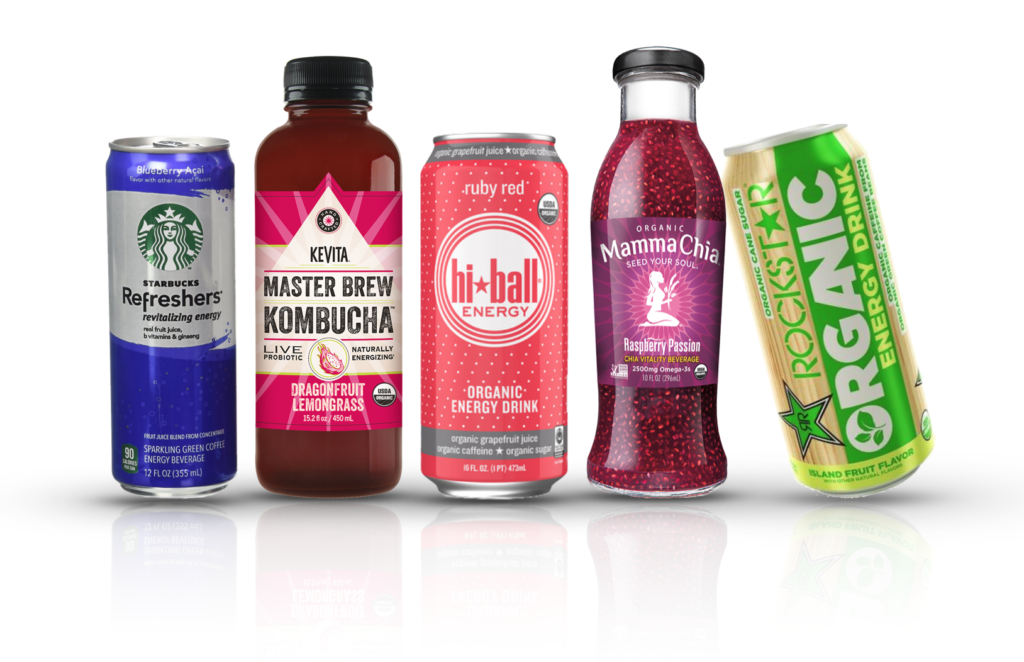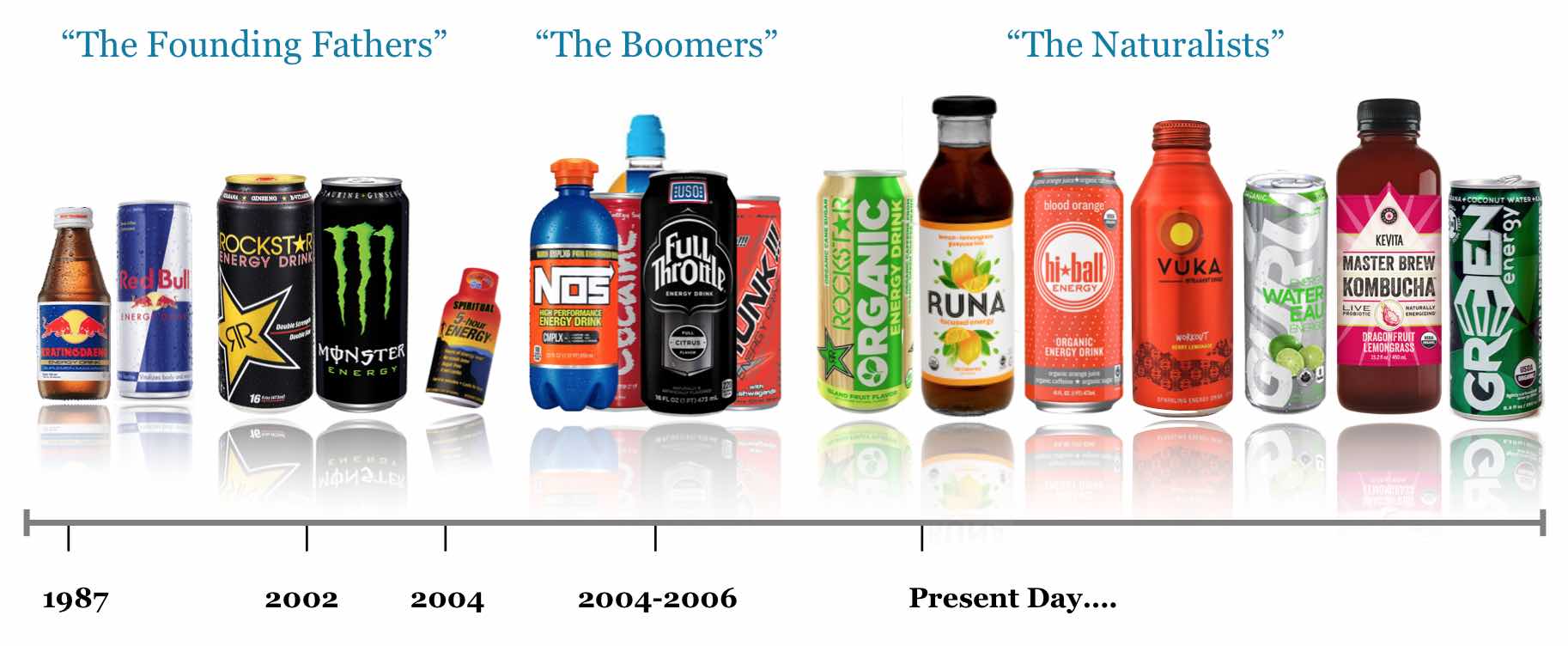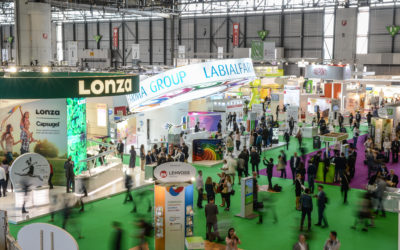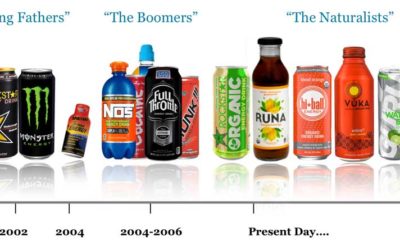In 1987, an energy drink was sold for the very first time in its home market of Austria. The original beverage, at the time called Krating Daeng, was actually a Thai energy drink marketed to truckers, farmers, and construction workers. It wasn’t until Austrian business man, Dietrich Mateschitz, drank this formula to cure his jet lag that Red Bull finally “got its wiiings” and a new category was born.
In 1987, an energy drink was sold for the very first time in its home market of Austria. The original beverage, at the time called Krating Daeng, was actually a Thai energy drink marketed to truckers, farmers, and construction workers. It wasn’t until Austrian business man, Dietrich Mateschitz, drank this formula to cure his jet lag that Red Bull finally “got its wiiings” and a new category was born.
The original energy drinks had to leverage their success solely on the premise that they worked. Nearly 20 years later, when the energy drink boom exploded in the USA, their success was founded on improved taste and variety. Now, it is 2016, and concepts like “free-from” and “clean label” are challenging the industry to keep up with an evolving core-consumer. Early evidence suggests that the performance of energy drinks under this clean label spotlight comes down to three important facts.
1. Maturing Millennials need Grown-up Energy
Imagine a young professional walking into a boardroom with an energy drink. Most people would visualize a loudly-branded can that looks like it belongs more at a motocross rally than an office. However, that image of energy is changing quickly.
The fact is, millennials have always been the dominant consumer for energy drinks. Mintel reports that, between the age of 18-34, 67% of males and 47% of females consume energy drinks and are by far the largest consumer base (Source: GMI/Mintel June 2014, Base: 2,000 internet users aged 18+). So what happens when these young adults age out of the skatepark and into the executive boardroom?
Like many others, recent college graduate, Ross Knutson from the University of Colorado, knows how this might impact his life.
“I appreciate energy drinks, but as I begin to enter the professional world after graduation, I would feel embarrassed to carry a flashy energy drink into a work environment,” explains Knutson. “I am glad to see more options in grocery stores that fit a variety of lifestyles.”

2. Trust is Built through Natural Ingredients
Credibility is largely related to trust. According to a Mintel survey in 2015, over one quarter of energy drink consumers surveyed say that they drink less energy drinks because they don’t trust the artificial ingredients inside (Mintel 2015: Survey Based on 168 internet users aged 18+ who consume less energy drinks). By substituting these synthetic and unrecognizable ingredients with known sources, like coffee and tea, consumers can easily draw a connection of familiarity.
“We are noticing some of the largest players in the energy drink industry going from extreme to natural,” says Jackson Zapp VP of Innovation at Applied Food Sciences (AFS), a global leader in functional ingredients for beverages. “Natural caffeine extracts, specifically our organic sources of caffeine, are dominating R&D efforts right now because they offer the same desired effects as synthetic caffeine and often have additional health benefits.”
For product makers like Todd Berardi, Founder & President of Hiball organic energy drinks, the design with natural ingredients is essential to his brand.
30% of users are now drinking natural energy drinks and shots.- Mintel
Mintel confirms that this is a quickly growing segment as 30% of users are now consuming natural energy drinks and shots (Mintel 2015, Safety Concerns Haven’t Slowed Energy Drink Consumption for US Parents). The emergence of big players in the industry such as Rockstar’s Organic SKUs, HiBall, Steaz, Guru, and others are leading examples for the category’s evolution.
3. Healthy is no Longer a Substitute for Flavor

The one caveat, and cardinal rule to all beverage formulation, is that flavor is still king. Consumers know that, above all else, success lies in the sensory experience of any product. Just because a product claims to be “healthy” or “better-for-you” does not mean it has the liberty to sacrifice taste.
Applied Food Sciences understands that working with botanical extracts can be challenging in masking bitterness and reducing sediment. AFS has been diligently working on improving the technologies used in herbal extraction to provide simple and novel ingredients that are highly water-soluble and have a more neutral taste profile for ease of use in beverage formulations.
“Two of the most innovative offerings in our portfolio are our organic caffeine extracts, and our natural guayusa tea extracts,” continues Jackson Zapp. “Standardized for naturally occurring antioxidants plus caffeine content, we can offer product makers ingredients that are easy to work with, certified organic, GRAS, and Non-GMO.”
Applied Food Sciences is an Austin, TX based company that provides a portfolio of clean energy ingredients to the industry. For more information visit AFS at booth #851 during the IFT Show in Chicago (July 17-19, 2016), visit www.appliedfoods.com or email info@appliedfoods.com
Article originally published on FoodDive



